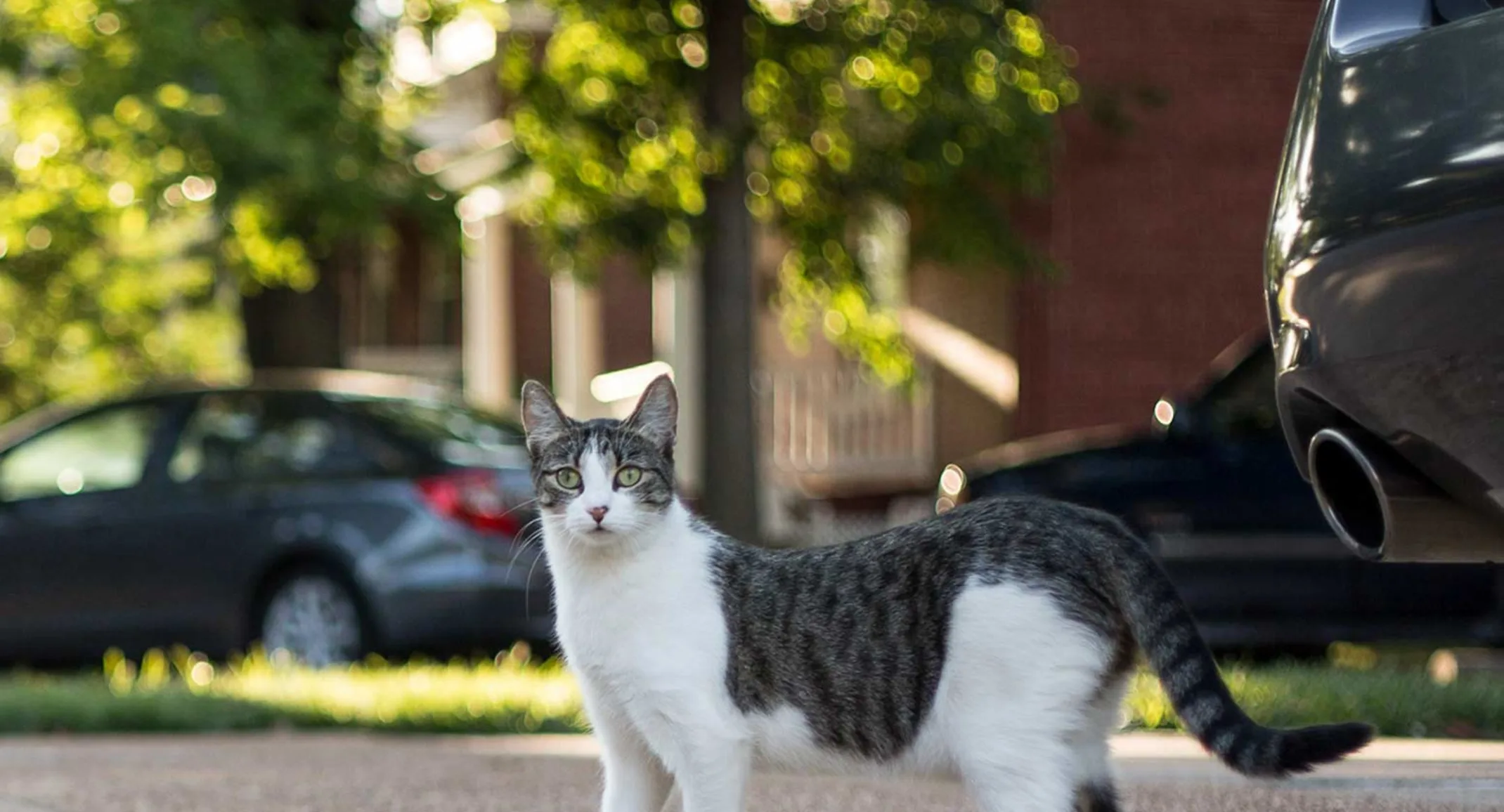Feral Cats or Stray Cats?
Cats

We’ve all seen them: the slinky cats prowling our alleyways and gardens, the flash of a tail disappearing under a house or around a corner… These are the cats that live outdoors, the free-roaming cats. They come in many varieties, from owned pet cats who have homes and may go in and out, to stray cats who had homes once but fell on hard, homeless times, to feral cats (community cats) who may have been born away from people and never had indoor homes. Sometimes it can be hard to tell the difference between these kinds of outdoor kitties and even harder to know how or whether to help them. So in honor of National Feral Cat Day, we’re going to talk a little bit about outdoor, free-roaming cats.
First thing first: how do we tell the difference between stray cats and feral cats? It can be difficult sometimes, but there are several clues. Socialization is the key – that is, how does the cat interact with humans? Feral cats (sometimes called community cats) are cats that have never had close contact with humans or have had so little, so long ago, that they act like they never did. They tend to run from humans, seeking hiding places away from us. They may live in colonies with other feral cats, and they’re usually most active at night. Additionally, they seldom vocalize, and they usually have clean, well-kept coats. If they’ve been spayed or neutered as part of a TNR program, they will often have an ear tip surgically missing. These cats survive on their own, outdoors, and the adults are unlikely to be able to be socialized to human contact and are generally not adoptable as pets.
Stray cats, on the other hand, are cats that used to have homes and were abandoned or lost. These cats, depending on how long they’ve been on their own, may be able to re-learn how to interact with people (if they ever stopped) and be adaptable. While stray cats that have been on their own for a long time may act very much like ferals, more recent strays may approach people, meow, and make eye contact. Some may even beg for attention! Unlike ferals, strays often live alone and have unkempt coats, looking dirty, matted, and disheveled as a result of the stress of suddenly living alone outdoors.
This brings us to our next point: If you come across a free-roaming outdoor cat, what do you do? It may not be immediately apparent if the cat you’ve encountered is a feral or a stray. If the cat appears healthy, well-fed, and in no distress, it’s probably someone’s pet. Those cats should be left alone! That’s not the case for stray and feral cats, though. Stray cats, especially, may need our help. The best way to help strays is to trap them, take them to a veterinarian or animal shelter for identification, and try to find their family. This website from the ASPCA has excellent tips for this process and the best ways to help feral cats!
Feral cats also need our help, but they don’t need us to find them homes. They already have them – outside. However, it’s important to make sure the feral kitties can’t keep making more of themselves! It’s estimated that there are as many feral and free-roaming cats in the US as there are owned pet cats. That means ensuring the feral population is spayed/neutered and vaccinated is vital to both maintaining their health and our neighborhoods and cities. A healthy feral colony will help control rodent and pest populations in their range as well as keep out other cats. If all the members of that colony have been spayed or neutered, then the colony will stop growing. The way to do this is to find a local TNR (trap-neuter-return) program that spays & neuters feral cats, vaccinates them, ear-tips them, and releases them back to their homes. Then a local volunteer (maybe you!) will feed and monitor the colony. In the New Orleans area, there is a staggering number of free-roaming, apparently feral cats. To help combat this expanding population, The Louisiana SPCA has a feral cat program that offers low-cost TNR services and helps in the relocation of especially problematic cats. If you find a stray cat, you can bring them here to MSAH to be scanned for a microchip and hopefully reunited with their families!
